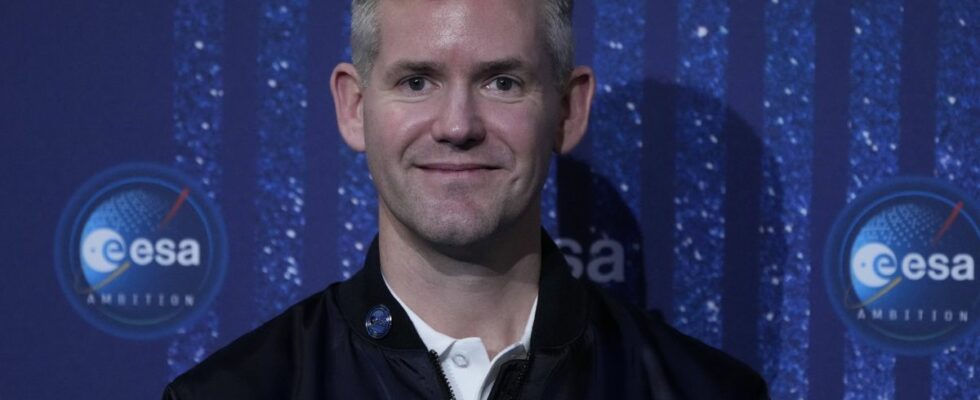For the first time, the European Space Agency (ESA) has selected a candidate with a disability. The British doctor, ex-paralympic champion, John McFall has joined his training program. This 41-year-old man, whose right leg was amputated after a motorcycle accident at the age of 19, will participate in training as a “parastronaut”. But what challenges does this recruitment represent? What is the objective of this program? 20 minutes examines this recruitment thanks to the insight of Estelle Moraux, lecturer in astrophysics at the Institute of Planetology and Astrophysics of Grenoble and finalist during the 2008 recruitment and Guillaume Weerts, former chief medical officer for astronauts at the within ESA.
What is the objective of the “parastronaut” program?
The “parastronaut” program should make it possible to study the challenge that sending a disabled astronaut into space would represent and to find solutions to meet it. “With my scientific background and my different experiences, I felt that I had to try to help ESA answer the question: can we send a person with a physical disability into space to do meaningful work there? ? “, explained also Wednesday John McFall during the ceremony of presentation of the new promotion of astronauts.
It is a form of “feasibility study”, explains Guillaume Weerts. “We will have to define the problems, how to test them, make an analysis of all the potential risks, define their seriousness, their probability, their possible solutions”, enumerates the former chief doctor of astronauts within the ESA who specifies that the program will last “between five and ten” years, according to a “rough” estimate. The ESA had opened its last selection process to three different types of disability, on the lower limbs, a difference in the length of the lower limbs or a height of less than 1m30.
The handicap of the new parastronaut is “not a problem in the profession of astronaut where there is no gravity and you don’t need to stand up”, underlines Estelle Moraux, lecturer in astrophysics at the Institute of Planetology and Astrophysics of Grenoble. “All disabilities are not compatible” especially for those of the upper limbs in the event of “extra-vehicular outing where both hands allow you to stand without stopping”, she specifies however. “The space environment is not trivial, it is not an environment to which the human organism is accustomed, not everyone will be able to go there”, abounds Guillaume Weerts.
What challenges does this recruitment represent?
The European Space Agency is aware of the diversity of disabilities. “The notion of disability is not a very clear definition, there are multiple situations of disability so we cannot make general rules, we need assessments on a case-by-case basis”, underlines Guillaume Weerts. “The selection itself is not very physical, we are not asked to be athletes,” says Estelle Moraux, who was among the last ten finalists in 2008 – six were selected.
“The first stage is that of the file, followed by a stage of psychotechnical and English tests and finally psychological interviews and exercises in a team under constraint”, she lists, noting however “a week of medical tests which was not “very physical”. However, so far people with disabilities were immediately eliminated. This is “perhaps the most essential point of this project” notes Guillaume Weerts. “We are moving from intangible rules for everyone to individual situations” and from the notion of “disability” to that of “ability” (in this context “from incapacity” to “capacity”).
“We will have to adapt each time and do it on a case-by-case basis”, confirms Estelle Moraux. However, the ESA hopes to succeed in putting in place a form of roadmap. “What is important in the project is to develop the methodology, we will base ourselves on a concrete case to extrapolate”, explains Guillaume Weerts. The astronaut recruitment process could become less exclusionary. “Instead of saying” ah you have that, goodbye “, we could say” we will see if it is possible anyway “” and thus take into account disabilities as “personal characteristics”, simplifies the former doctor Chief of ESA.
Is the symbolic message essential?
“We can’t promise to take everyone and be fully inclusive, that won’t be possible. But this program means that we are ready to look at how far we can go and what needs to be done to be more inclusive,” explains Guillaume Weerts. An essential message of inclusivity. “There is a real effort and it is also to motivate an entire population who saw themselves as excluded, who thought it was impossible for them when we realize that this is not the case”, decrypts Estelle Morals.
John McFall said he was “incredibly proud and excited” to have been selected: “It felt like a whirlwind because, being an amputee, I never thought becoming an astronaut was a possibility. “These are jobs that make people dream and seem impossible to achieve. It is therefore very important to pay attention to inclusion to show that it is accessible to many people and to prevent them from censoring themselves”, underlines Estelle Moraux who adds that representativeness is essential.
“The message I want to give to future generations is that science is for everyone and that space travel hopefully can be for everyone,” said John McFall after his selection. . “Everyone” but with at least a master’s degree, three languages spoken fluently, three years of professional experience, under 50 and exceptional intellectual and psychological abilities.

